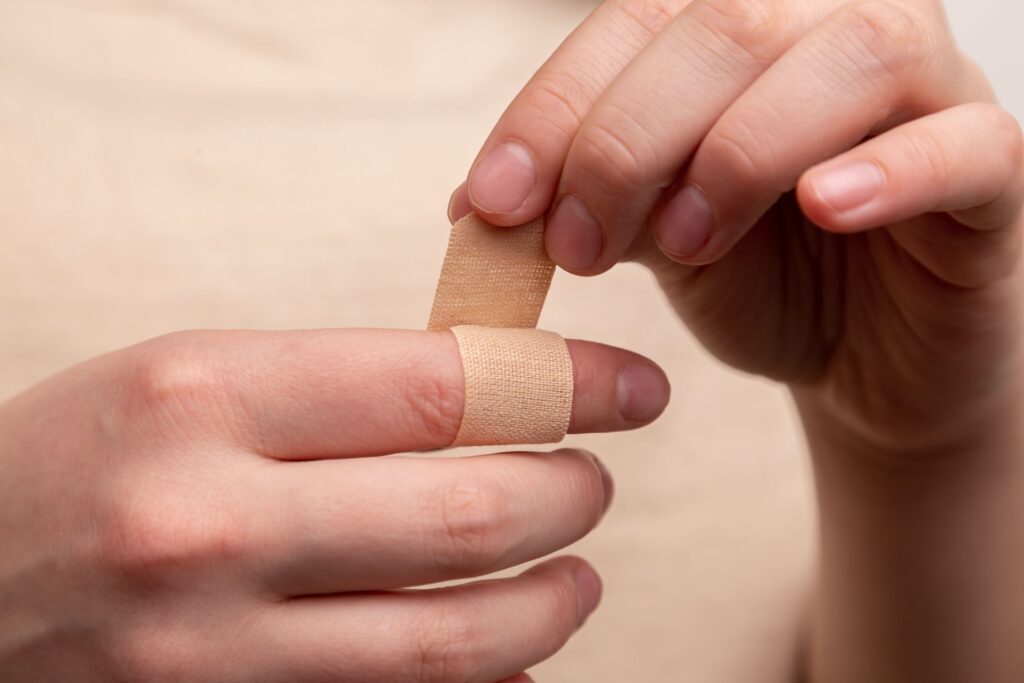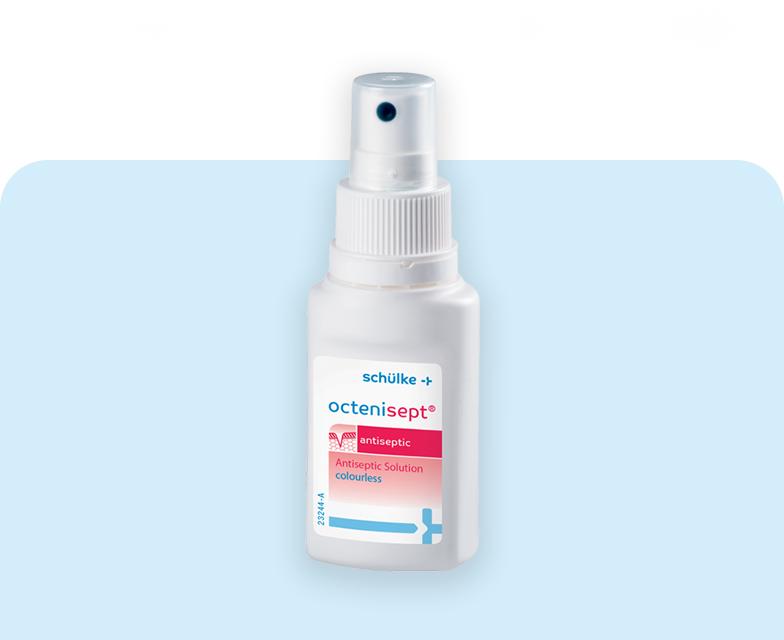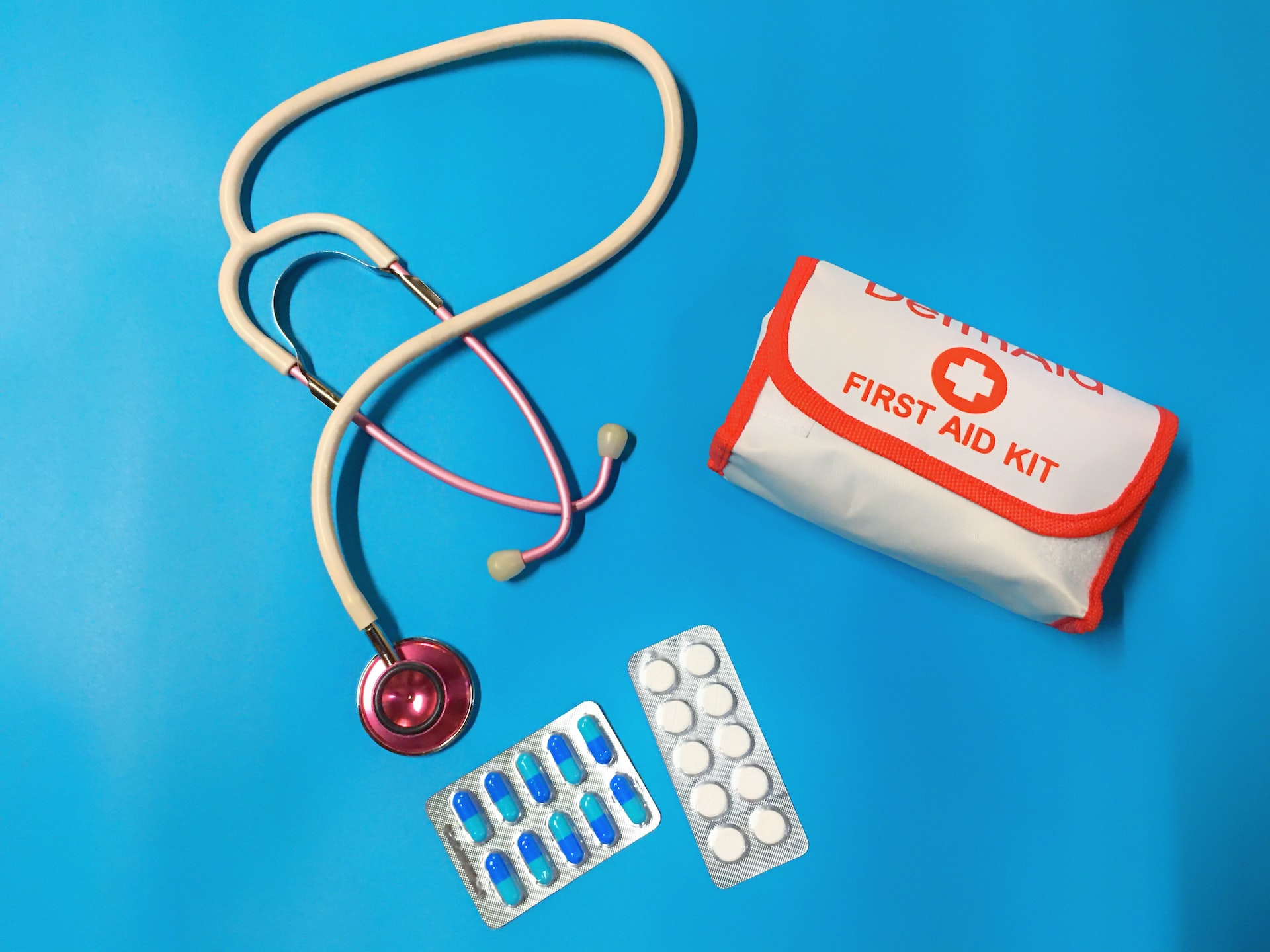A well-stocked first aid kit at home or the office is essential to ensure emergency wounds can be dealt with immediately. There are various types of wound dressings available, and they include:
- surgical dressings
- general wound dressing
- first aid dressing
- central line dressing and many more
Keeping an emergency first-aid medical kit within their reach for aiding the wounded areas is definitely a must due to sudden little accidents. A general kit should include essential aiding items such as:
1) Dressing Forceps
It is one of the essential instruments in a first aid Kit. Dressing forceps hold dressings such as gauze and roller bandages to prevent infection. These tools are helpful during wound debridement to extract infected or necrotic tissue or waste from the injury. Dressing forceps may further be used for suturing. Multiple variants are available, including tweezer-like with a round tip and some dressing forceps that often come with handles like a scissor.
2) Tray with Gallipot
A tray with a fragmented curved gallipot helps hold things and extract tissue or other infected materials derived from the cut of wounds. This tray with gallipot is handy during a wound dressing as it allows the nursing crew to maintain cleanliness while aiding the patient.
3) Cotton Balls
The cotton balls that come with a medical kit for wound dressing are usually untreated and antiseptic wool free from contaminated agents like dirt and insects. They are essential for cleaning wounds. After sanitation, cotton balls are also used for prepping injured places before applying bandages or dressings. Cotton balls are further helpful during a sterile method as it helps in applying medicines or ointments to a scar, ensuring it remains fresh and bacteria-free.
4) Gauze Swab
Gauze swab is essential in wound dressing and padding as it ensures maximum protection against blood spill, specific infections, and much more. It is beneficial for adorning wounds where other fabrics might cleave to the injury or incision. Usually, it is first used to wash the wound gently with a damp piece of gauze or washcloth. Then, they apply a bit of fresh gauze, covering the wound with tape throughout the edges to hold it in position.
5) Absorbent Dressing Pad
The absorbent dressing Pad is very soft and is used during Sterile Absorbent Dressing (ABD) for binding wounds and keeping them shielded from moisture. These pads further prevent the decay of injuries, which can end up as infections and other complexities pointing to poor health. The sealed edges of the pad retain internal moisture under the dressing. Its application creates a waterproof barrier, and the sides also stop linting, further preventing prevents wound contamination.
This pad has a delicate non-woven external layer that promptly wicks liquid to a cellulose core, absorbing and separating the fluid sideways to stop pooling. Some high-quality Absorbent Dressing Pad is designed with a hydrophobic rear to prevent strikethrough.
6) Hand Wipe Tissue
These tissues help to maintain maximum hygiene during wound dressing by keeping hands thoroughly wiped clean. These wiping tissues are made of delicate but durable material so that they don’t tear easily. These tissues are also soaked in antiseptic solutions for sanitary application.
7) Sterile Sheet- Laminated Tissue Paper
This laminated sheet was used to present a sterile setting to preserve a patient’s wound from getting infected. This tissue paper features durable construction that resists tearing in sensitive circumstances. Other aiding items that an advanced wound dressing kit includes are:
- first-aid manual
- adhesive tape
- elastic bandage
- antibiotic cream
- antiseptic wipes
- hydrocortisone cream
- safety pins
- plastic gloves
- tweezers
- antiseptic solution
- disposable instant cold packs
- thermometer, and others
There are various types of wound dressings and it can be confusing to know which you should use on multiple injuries.
Which wound dressing do I need?
1) Sterile Dressing
This is a sterile, un-medicated pad on a solid conforming bandage. These dressings come in various sizes, meaning they can treat wounds of all sizes. The pad provides a cushion for the wound and absorbs all exudates, which include blood and pus.
The sterile dressings are securely in place by the incorporated conforming bandage and are fantastic at providing initial protection from infection whilst en route to a hospital. Sterile dressings are vital in any first aid kit.

2) Adhesive Dressings
These are bandages with a sterile absorbent pad with an adhesive surround that come in individually wrapped cut bandages. The dressings mould to your body shape and stay in place even on awkward areas like the finger, neck, elbow, or hip.
Adhesive dressings are available in various sizes, making them suitable for covering all sizes of cuts or abrasions. These dressings allow a wound to breathe and heal, protecting it from infection. Adhesive dressings are a fantastic addition to any first aid supplies.
3) Non-Adhesive Dressings
These usually come as a roller bandage as they are easy and quick to use while absorbing exudates without sticking to the skin. This means they cause minimal trauma to the skin when they are removed.
The dressings are specially designed to draw exudates away from the wound, minimising the chance of infection in the wound. Non-Adhesive bandages can be secured to the skin using a retention or microporous tape if required. They are suitable for abrasions, superficial cuts, and lightly exuding wounds.

4) Spray on dressings
This is a spray method of stemming bleeding from wounds. Spray-on dressings create a film layer over a wound. They are an excellent alternative to material dressings, creating a barrier against bacteria and helping protect a wound from infection. These dressings suit minor injuries such as cuts and abrasions.
5) Trauma and Ambulance Dressings
This thick dressing pad has an elasticated bandage, sometimes called a triangular bandage. Trauma and Ambulance Dressings are designed to aid situations for treating severe wounds where a casualty suffers from heavy blood loss.
The elasticated bandage allows pressure to be applied to a wound while securely holding the dressing pad. The fast application of Trauma or Ambulance Dressings can stem lethal bleeding and reduce the risk of a casualty entering shock. Trauma Dressings are vital for restocking motor vehicle first aid kits.




